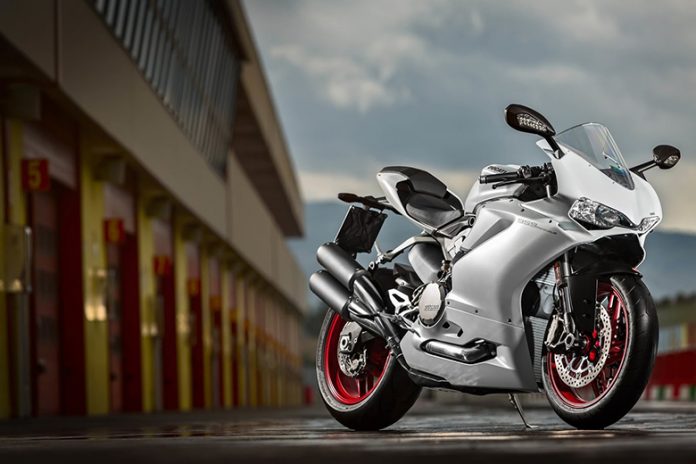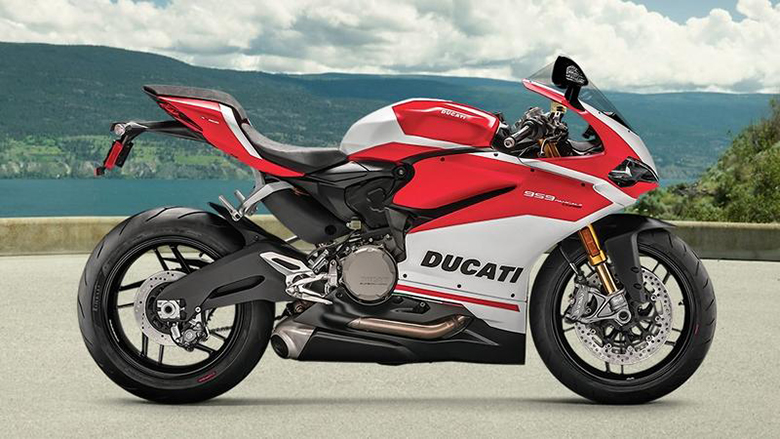It’s hard to argue with the stopwatch’s accuracy on the racetrack. The potential to make better street bikes is what we take away from triumphs and pole positions. Competition and mass production coexist in Borgo Panigale because they are so close. Combining cutting-edge technology, materials, and “visionary” concepts creates one-of-a-kind bikes like the 959 Panigale, which takes the DNA and spirit of winning Superbikes and applies it to a practical level that has never been achieved before. Power Mode, Ducati Quick Shift, Fully RbW, and a steering damper are all standard equipment on the Panigale 959.
2019 Ducati 959 Panigale Sports Bike – Features and Price
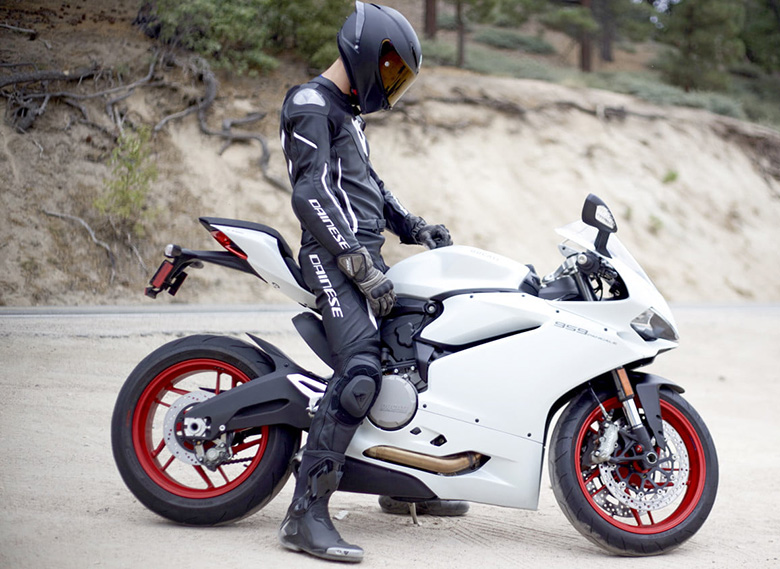
Engine
The 959 Panigale’s 90° L-twin Superquadro engine improves over the previous iteration seen in the 899 Panigale. 959 Panigale is also the first Superquadro to meet Euro 4 pollution control requirements.
At 10,500 RPM, this twin-cylinder engine produces 157 horsepower, and at 9,000 RPM, it has an output of 107.4 Nm of torque. The extended piston stroke – from 57.2 to 60.8 mm – allowed the engine to grow in size, although the bore remained at 100 mm. It is the first time that a Superquadro engine has had a whole new crank journal lubrication system to accomplish the greater stroke length.
To accommodate the longer stroke, the engineers redesigned the con-rods, although the compression ratio remained the same at 12.5:1. The piston crown and DLC (Diamond-Like Carbon) coating on the piston pins were also rethought. To meet Euro-4 standards, the two heads and top covers of the aluminum have been given a ribbed pattern. A separate cam timing chain was employed for the same purpose.
Its “larger brother,” the 1299 Panigale, shares the 959’s crankcases, which are vacuum die-cast utilizing Vacural® technology to provide maximum weight savings and feature uniform wall thickness as well as enhanced robustness. Like the oil sump, the crankcase cover and clutch casing are aluminum and now have a split design with variously ribbed patterns on either side.
Allows for large valve diameters: 41.8 mm for the intake valve and 34 mm for the exhaust valve. Racing-derived rocker arms, “super-finished,” with a unique DLC face for decreased friction and higher fatigue strength, are used to close and open the valves.
The oval throttle body proportions, with an equivalent diameter of 62 mm, assure the 959 Panigale’s volumetric efficiency. Currently, the throttle bodies are equipped with two injectors per cylinder (one above and one below the butterfly) that are separately operated by a Ride-by-Wire system. To retain performance-optimized fuel mapping and successfully limit HC and CO levels while avoiding unburned fuel emissions, the new engine utilizes Ducati’s secondary air system.
A six-speed gearbox and an oil bath clutch are included in the transmission. Mid-size Superquadro engines have never before had a self-serving clutch assembly, allowing the rider to release the grip without any further effort from them. It improves frictional efficiency while also making the clutch lever “feel” lighter at the handlebar for the rider. Rear-end de-stabilization is reduced by the exact mechanism, allowing for real racing “slipper” action, resulting in a considerably smoother sensation when shutting the throttle or during aggressive downshifting, and with the added advantage of a super-responsive lever. An entirely new exhaust system has been implemented in this model, which has two silencers on the right side of the bike.
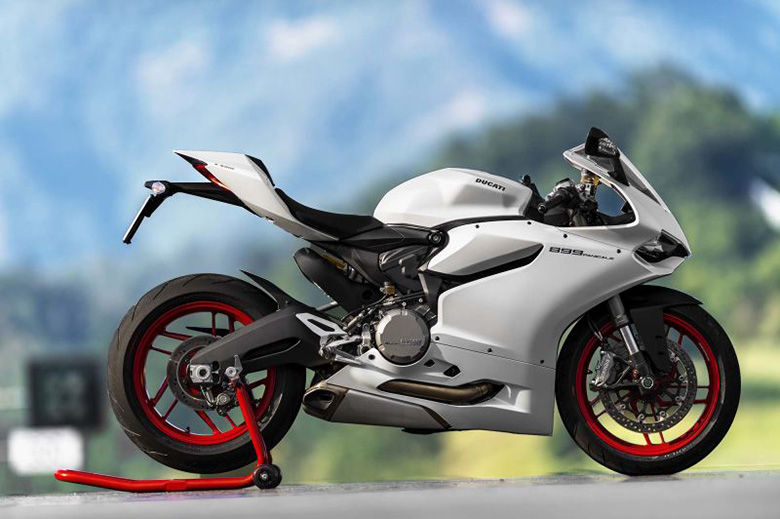
Trademark Desmo System
Is it possible that Ducati’s Desmodromic timing mechanism would not be included in the 959 Panigale engine? Regular valve springs would not keep intake and exhaust valve rocker arms in line with the vertical closing profiles of high-performance cam profiles of a Superquadro engine’s high-performance camshafts. This model’s distinctive high-performance standards may be achieved by using steep cam profiles and extreme cam timing thanks to the Desmo system’s mechanical valve closure, which is as precise as the valve opening. Ducati’s World Superbikes and Desmosedici MotoGP motorcycles employ this technology, as do all of their other models.
The long Road to Major Services
The 2019 Ducati 959 Panigale Sports Bike engine was designed to generate more torque over a broader range of revs, making it more suited for track use. As a result, valve clearance examinations are still necessary every 24,000 kilometers, despite the higher torque and maximum power ratings (15,000 miles). Every 12,000 kilometers (7,500 miles) or 12 months, a general service is necessary.
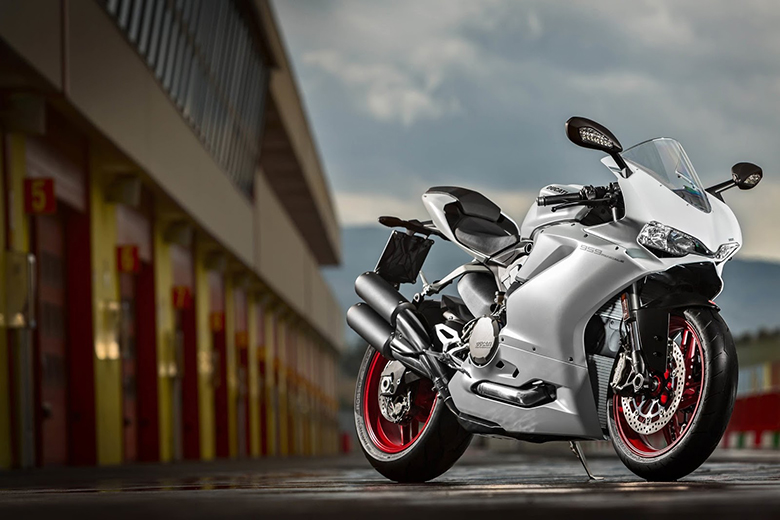
Frame
The 959 Panigale, like its “larger brother,” the 1299 Panigale, has a stressed part of the chassis, the Superquadro engine, and a compact, enhanced-strength die-cast aluminum monocoque. Protruding from the monocoque, the steering head bearings are housed in two aluminum bushes. The airbox is formed, which includes the air filter, throttle bodies, fuel injectors and aluminum fuel tank bottom and is sealed off.
The 959’s chassis geometry, which was already exceptional on the 899, has been considerably enhanced. The 24° rake and 96 mm tail remain the same on the front end. To achieve the same 1,431 mm wheelbase as its predecessor, the completely die-cast aluminum twin-sided swingarm has a lower pivot point (4 mm lower than the 899’s) and a 51% to 49% weight distribution.
Suspension
43 mm Showa BPF forks with fully adjustable preload, compression and rebound damping are fitted to the 959 Panigale. To install the radial caliper brakes, the titanium grey fork bodies employ chrome sliders as slider mounts. When used in conjunction with the Showa Big Piston Fork (BPF), damping control is greatly enhanced at low speeds thanks to the reduced oil supply pressure and the consequent reduction in fluid consumption. Improved suspension performance and substantial weight savings are achieved as a consequence. The front end is completed with a damper for the steering.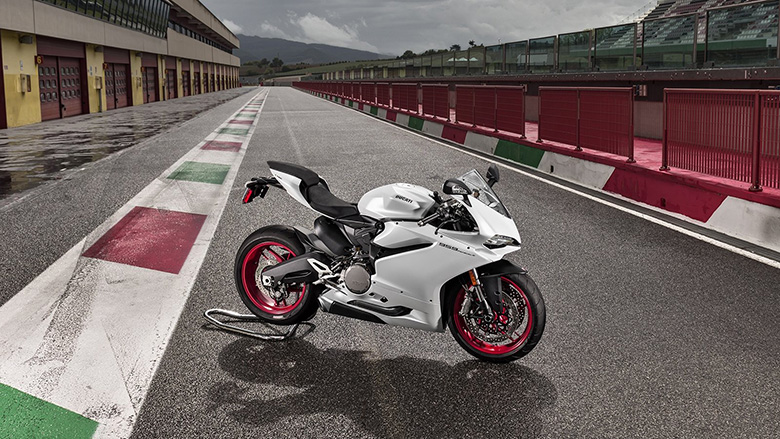
The Sachs mono-shock is located on the right side of the rear suspension. Because of its unusual placement, the unit may be easily adjusted for rebound and compression damping as well as spring pre-load, and it’s intended to operate as a progressive-rate linkage on the swingarm’s dual sides.
Wheels and Tires
The Pirelli Diablo Rosso Corsa tires on the 959 Panigale’s 3.5-inch front and 5.5-inch rear wheels measure 120/70 ZR17 for the front and 180/60 x ZR17 for the rear, respectively.
For the 959 Panigale, the Pirelli Diablo Rosso Corsa tires are the right option, providing excellent grip while leaning into and accelerating out of bends. To maximize the contact patch and produce the best road and track grip, Pirelli’s World Superbike-derived technology was used to develop the rear tire.
Braking system
Rear braking is handled by two M4.32 Brembo monobloc calipers operated by master cylinders on the 959 Panigale. The front Brembo calipers hold 320mm discs, while the rear Brembo caliper grips a 245mm disc.
2019 Ducati 959 Panigale Sports Bike – Price
The new 2019 Ducati 959 Panigale Sports Bike is available at $15,395 only.
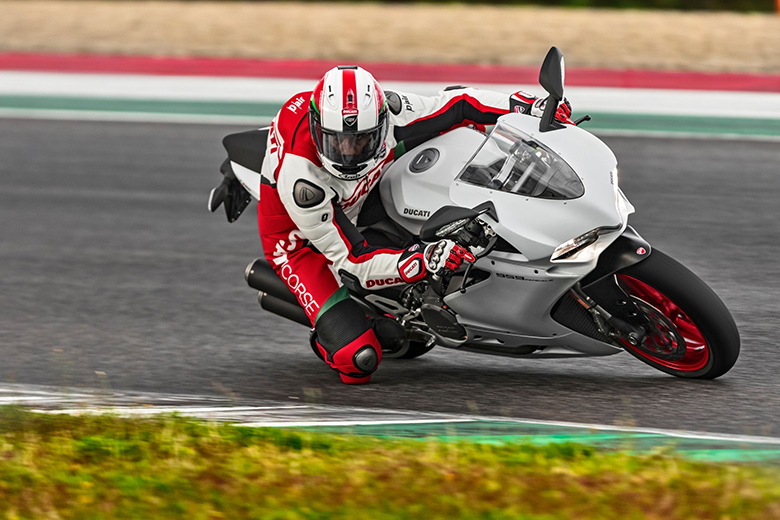
2019 Ducati 959 Panigale Sports Bike – Technical Specifications
Engine
| Type | Superquadro: L-twin cylinder, four valves per cylinder, Desmodromic, liquid-cooled |
| Displacement | 955 cc |
| Bore X stroke | 100 x 60.8 mm |
| Compression ratio | 12.5:1 |
| Power | 110 kW (150 HP) @ 10.500 rpm |
| Torque | 102 Nm (75 lb-ft) @ 9.000 rpm |
| Fuel injection | Mitsubishi electronic fuel injection system. Twin injectors per cylinder. Entire Ride-by-Wire elliptical throttle bodies |
| Exhaust | 2-1-2 system having catalytic converter and two new lambda probes. Stainless steel pre-silencer + twin aluminum side mufflers |
| Gearbox | Six speed with Ducati Quick Shift (DQS) |
| Primary drive | Straight cut gears; Ratio 1.77:1 |
| Final drive | Chain; Front sprocket 15; Rear sprocket 43 |
| Clutch | Slipper and self-servo wet multi-plate clutch including hydraulic control |
Chassis
| Frame | Monocoque Aluminium |
| Front suspension | Fully adjustable BPF Showa forks. 43 mm chromed inner tubes |
| Front-wheel | 10-spoke light-alloy 3.50″ x 17″ |
| Front tire | Pirelli Diablo Rosso Corsa 120/70 ZR17 |
| Rear Suspension | Fully adjustable Sachs unit. Aluminum double-sided swingarm |
| Rear Wheel | Ten spokes light alloy 5.50” x 17” |
| Rear tire | Pirelli Diablo Rosso Corsa 180/60 ZR17 |
| Wheel travel (front/rear) | 120mm (4.72 inches) – 130mm (5.12 inches) |
| Front brake | 2 x 320mm semi-floating discs, radially fixed Brembo Monobloc M4.32 4-piston calipers, with ABS as standard |
| Rear brake | 245 mm disc, 2-piston caliper, with ABS as standard |
| Instrumentation | Full LCD display |
Dimension
| Dry weight | 176 kg (387,2 lb) |
| Curb weight | 200 kg (440 lb) |
| Seat height | 830 mm (32,48 in) |
| Wheelbase | 1.431 mm (56.34 in) |
| Rake | 24° |
| Front-wheel trail | 96 mm (3.78 in) |
| Fuel tank capacity | 17 l – 4.5 gallons (US) |
| Number of seats | Dual seat |
| Warranty (months) | 24-month unlimited mileage |
| Maintenance (km/months) | 12,000km (7,500 m)/12 months |
| Valve clearance adjustment (km) | 24,000 km (15,000 m) |
Emission Standard
| Standard | Euro 4 |
| Emissions | 133 g/km |
| Consumption | 5,6 l/100 km |
Conclusion
On the track, the stopwatch’s accuracy is unquestionable. The 959 Panigale’s 90° L-twin Superquadro engine replaces the 899 Panigale’s. Possible that the 959 Panigale engine won’t employ Desmodromic timing? The 959 Panigale has 43 mm Showa BPF forks with fully adjustable preload, compression, and rebound damping, as does the 1299 Panigale. Master cylinders control the 959 Panigale’s Brembo monobloc calipers.

